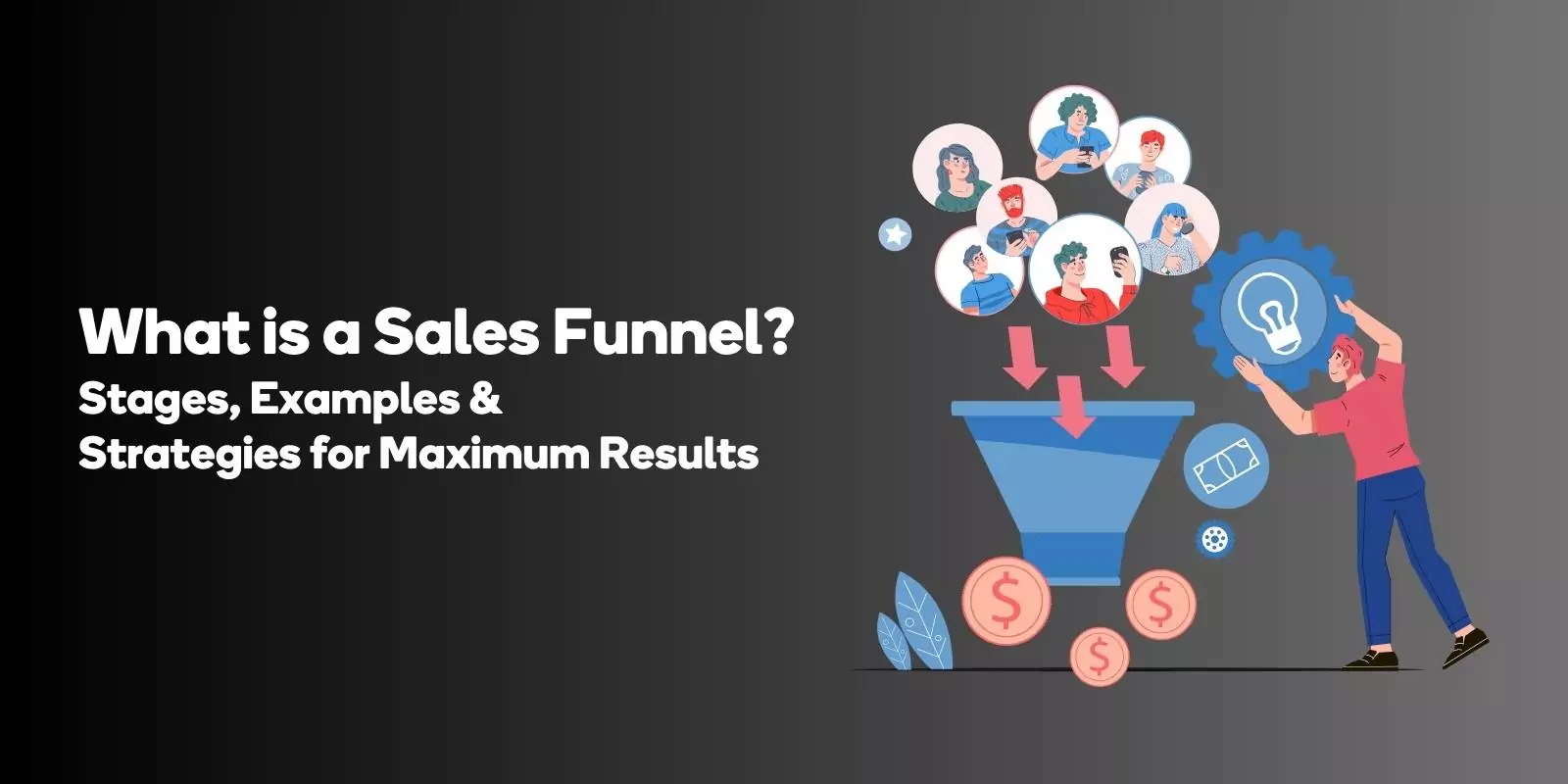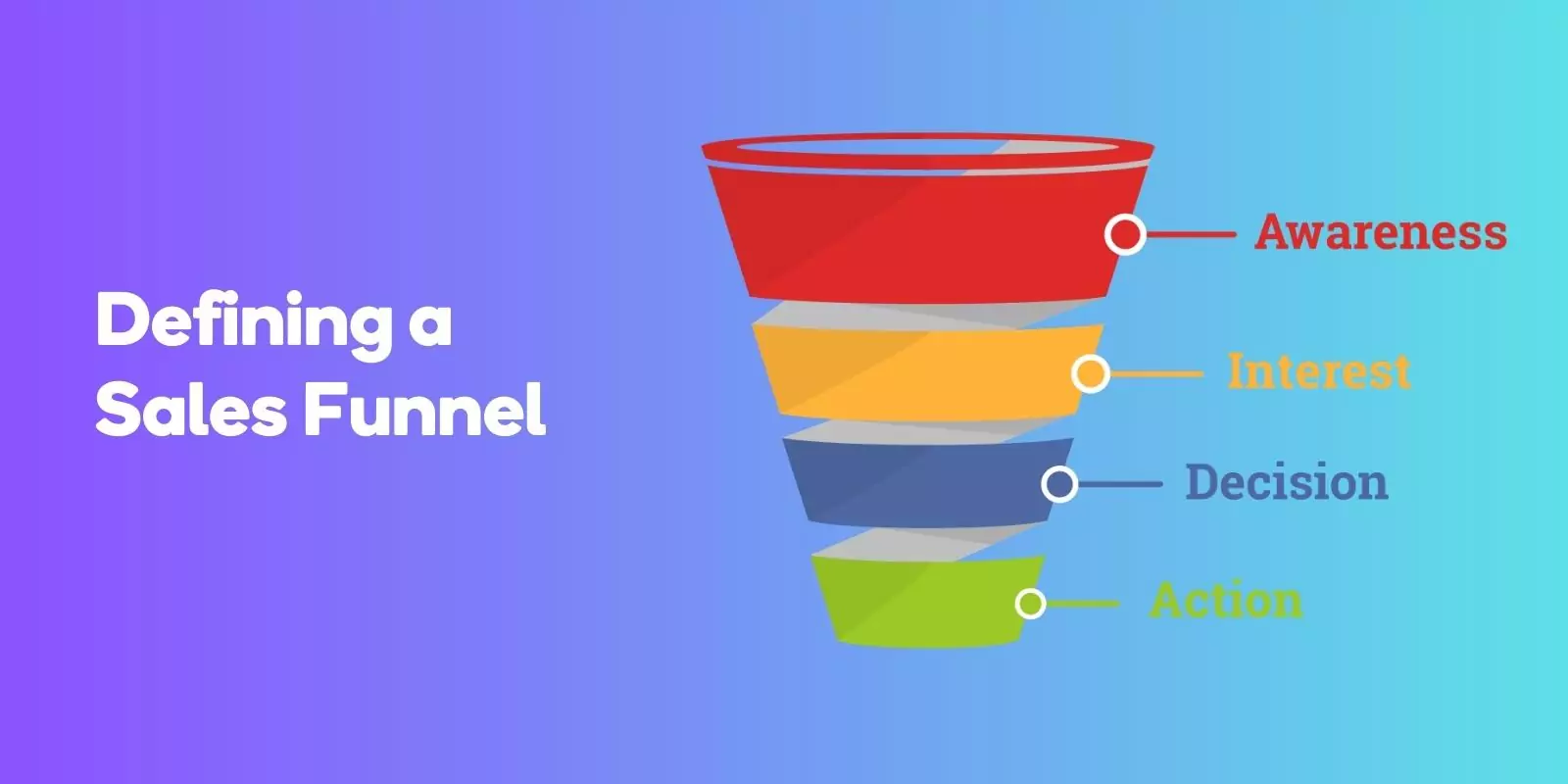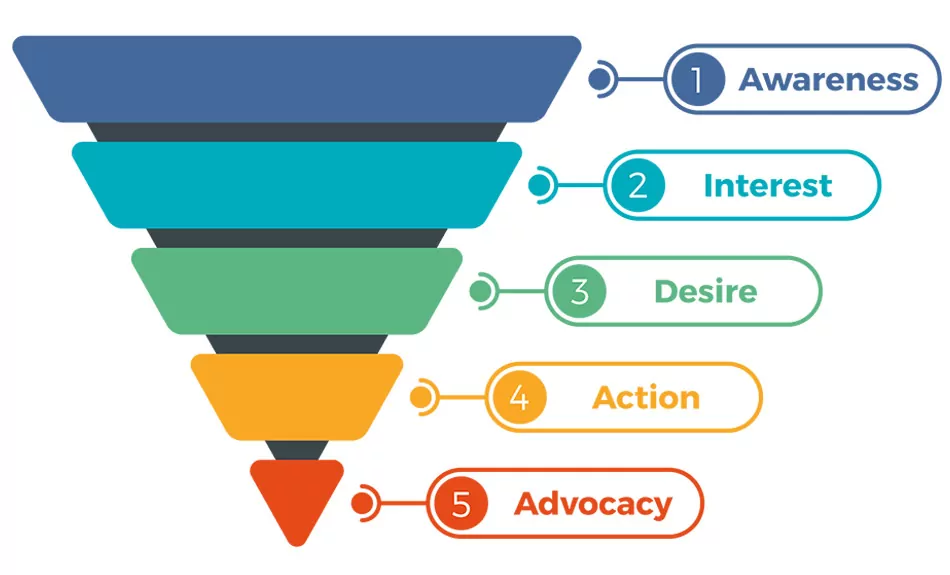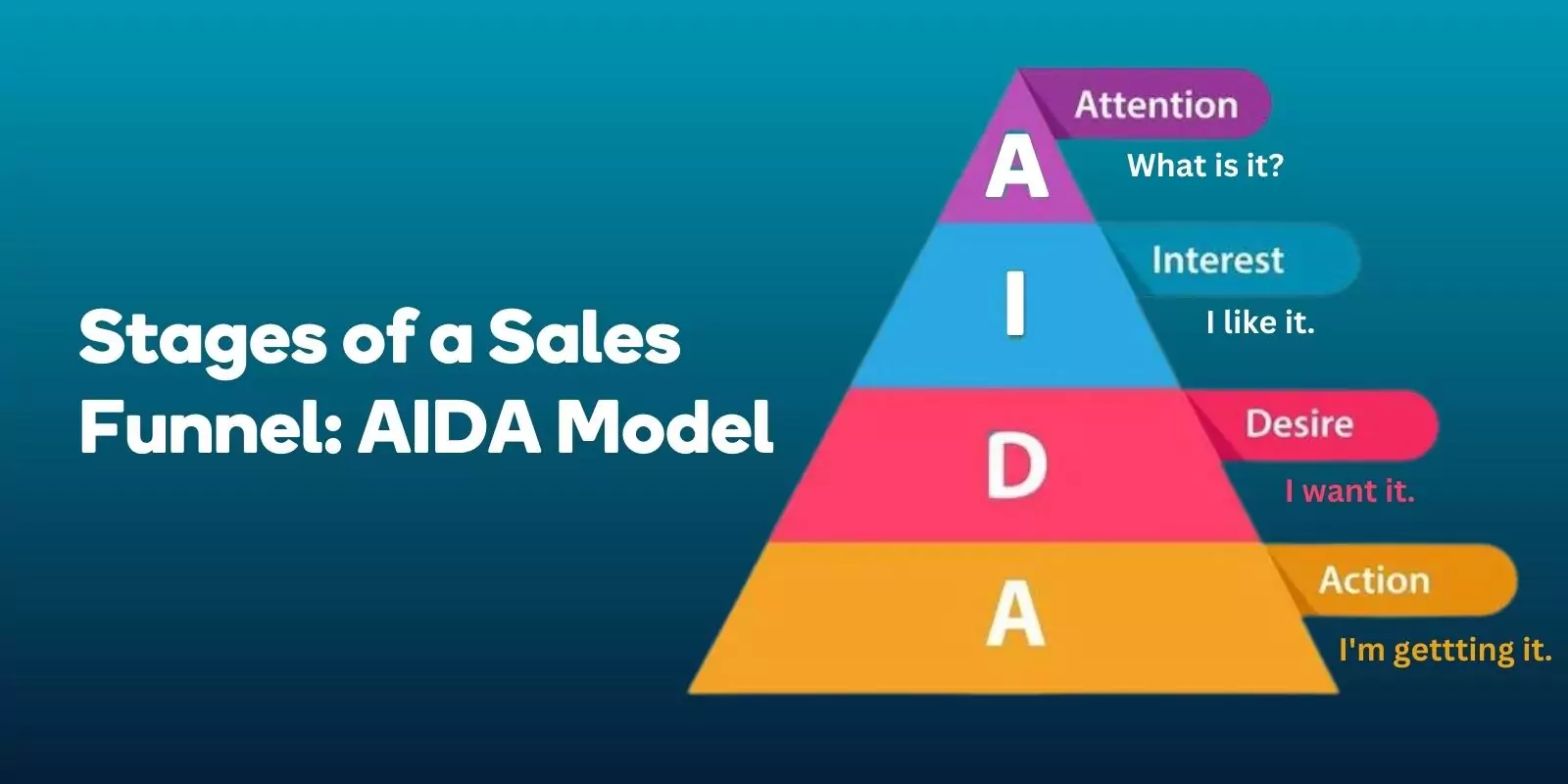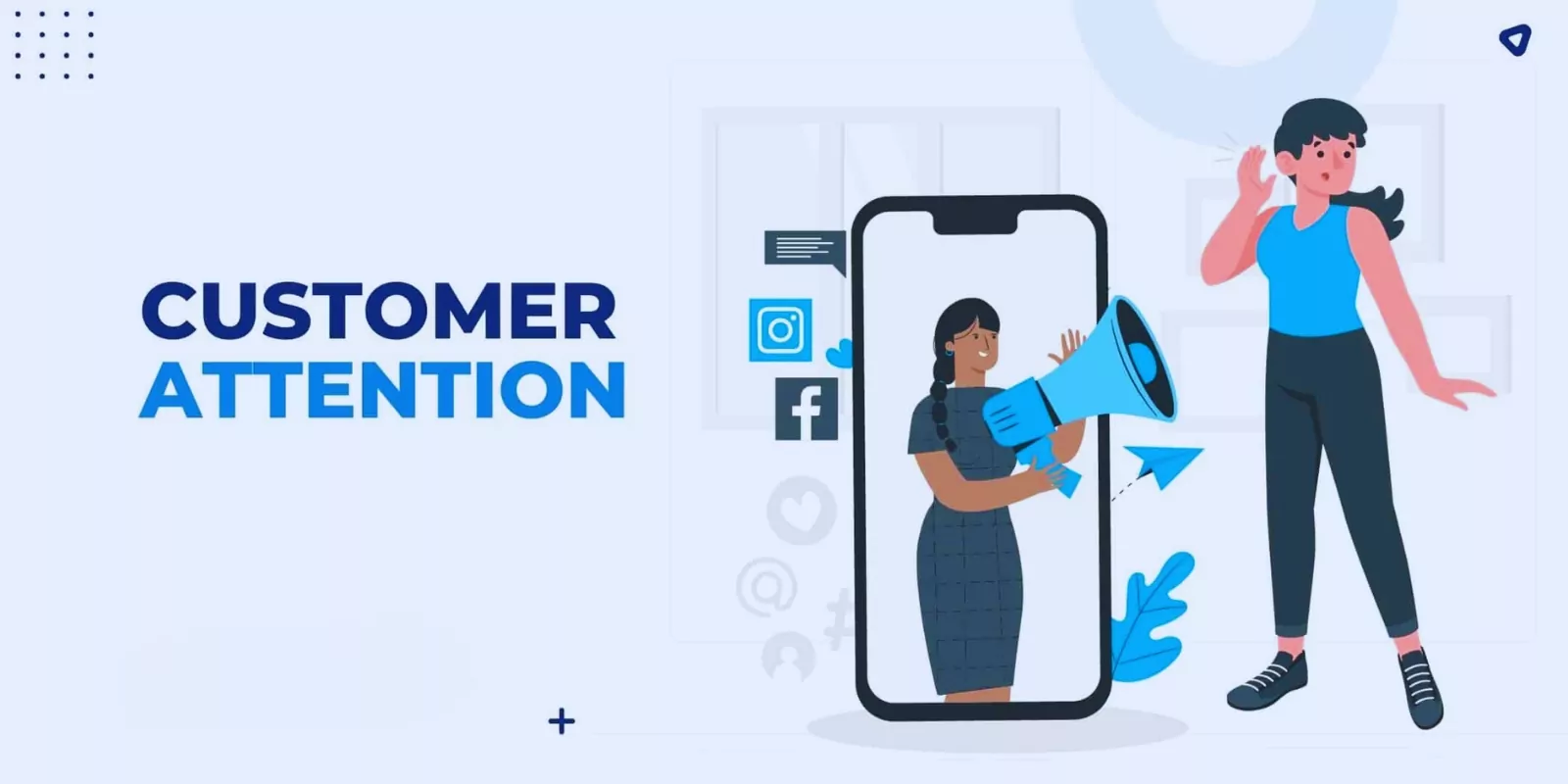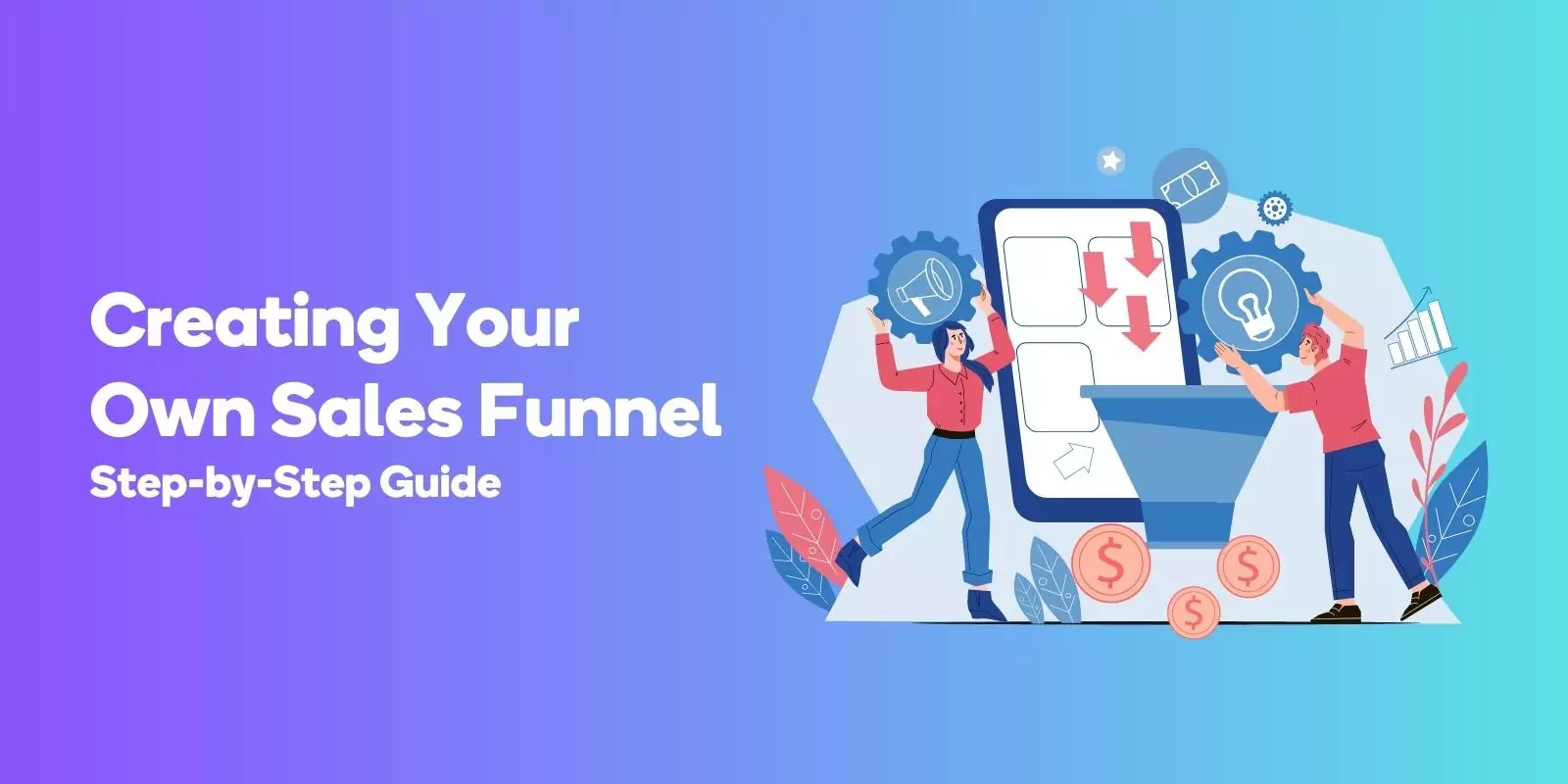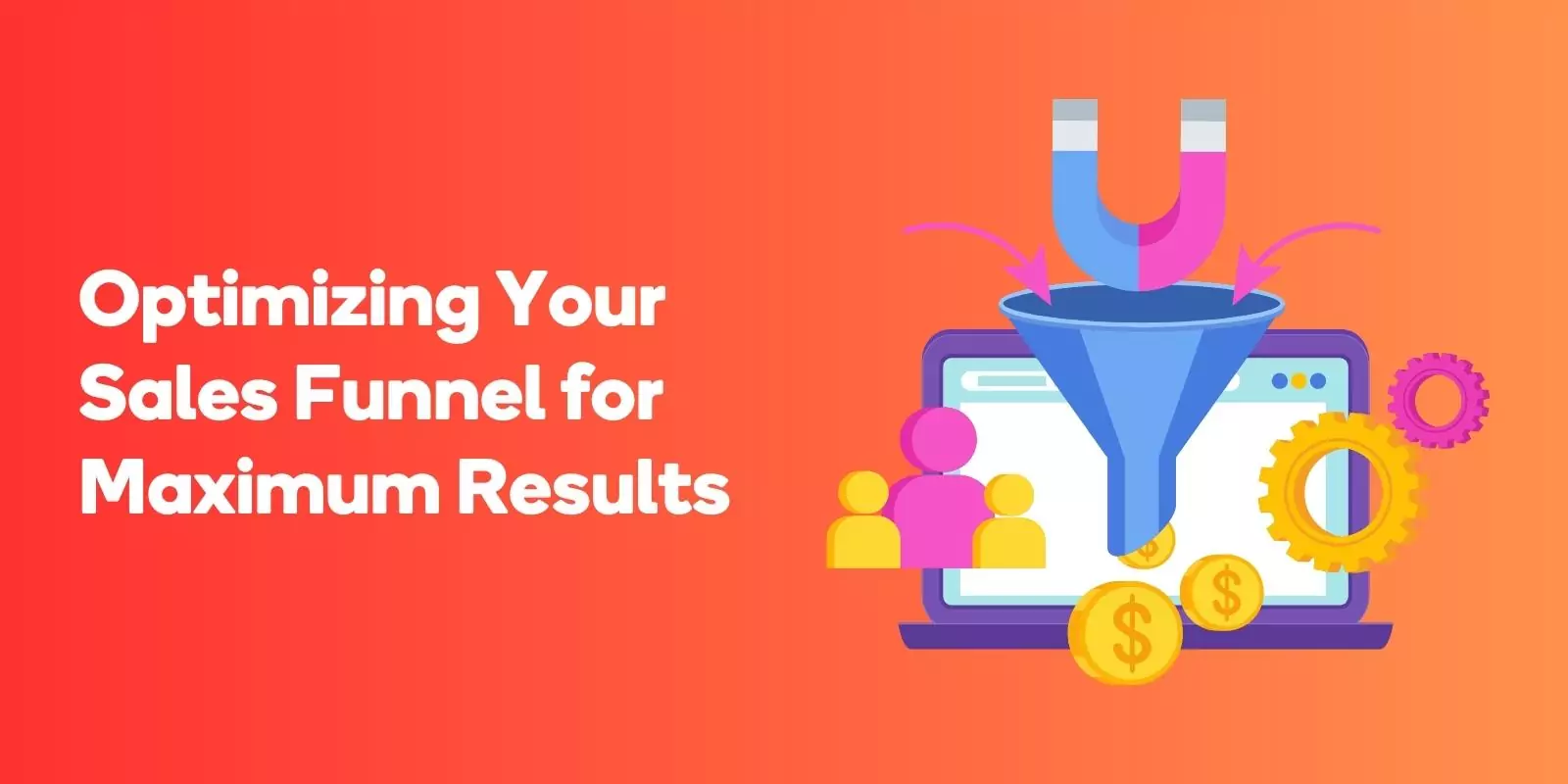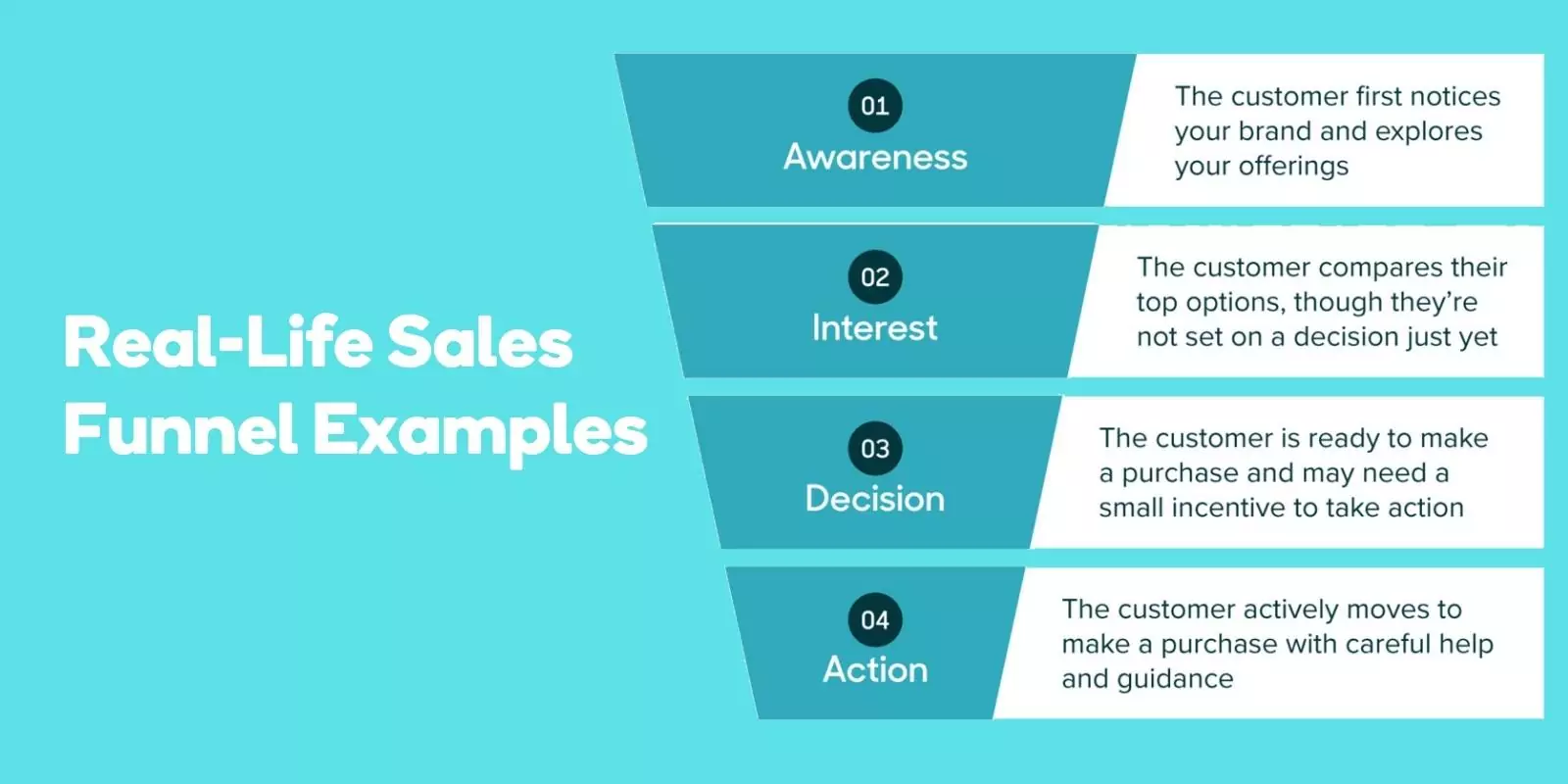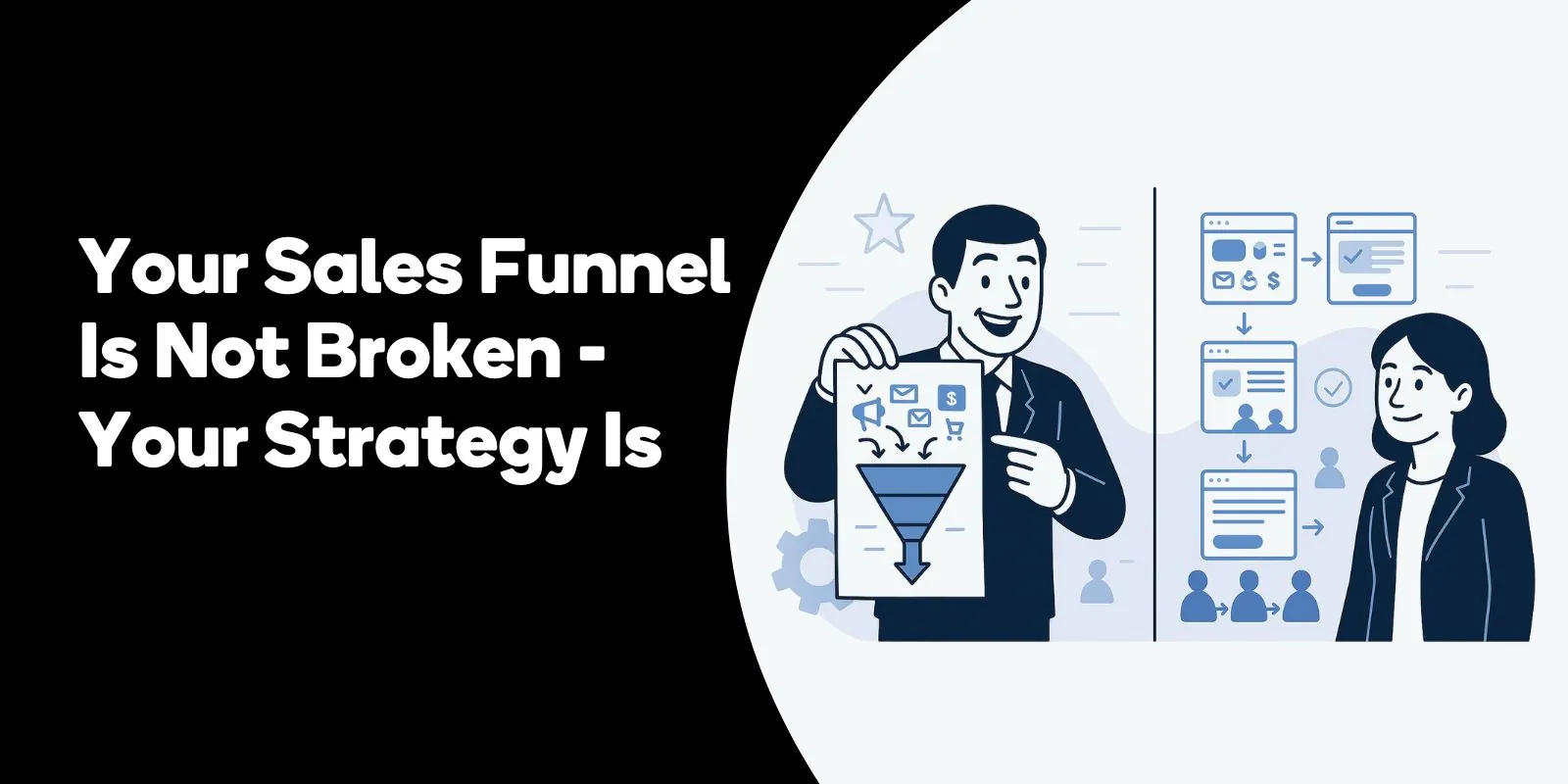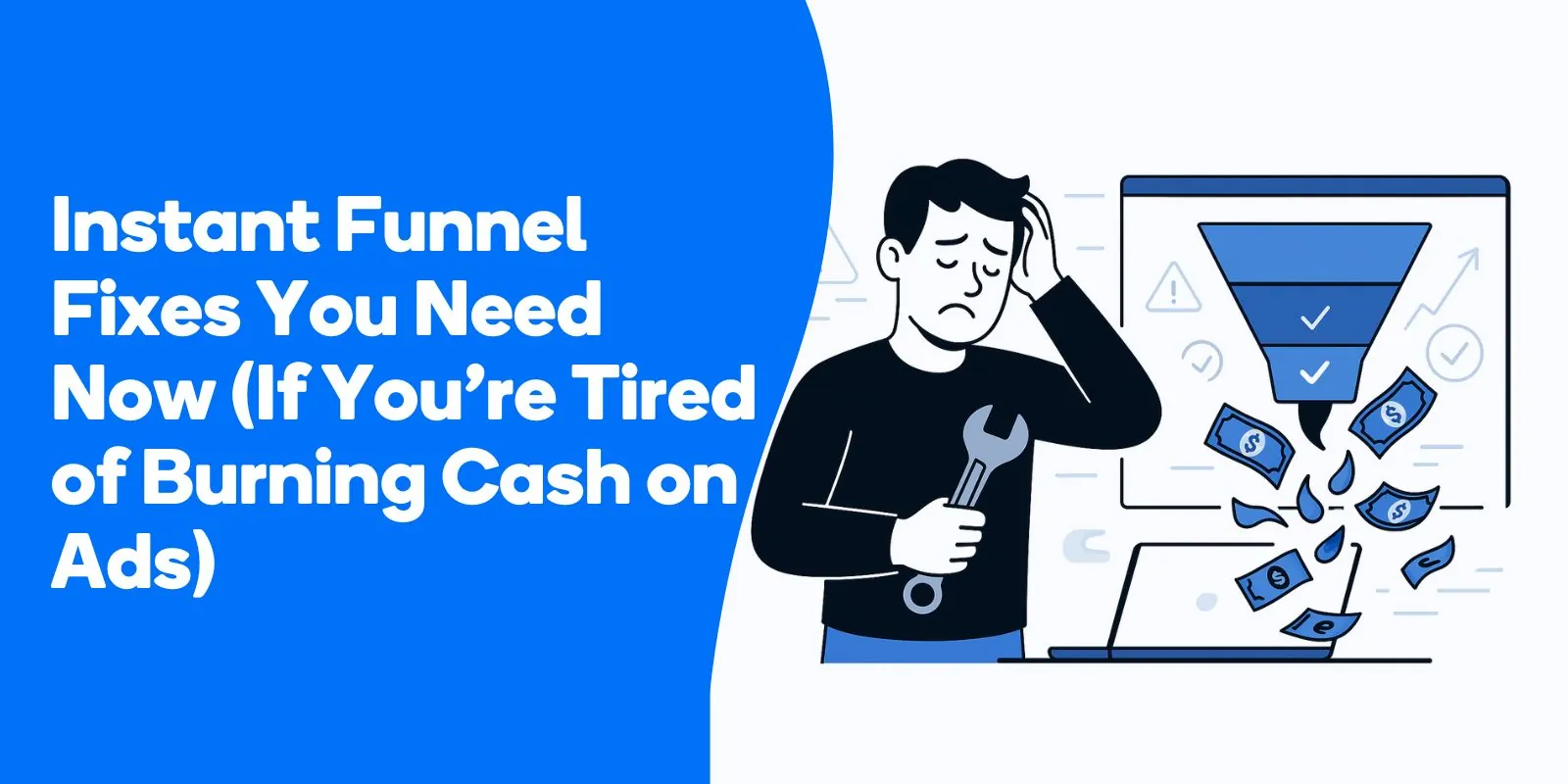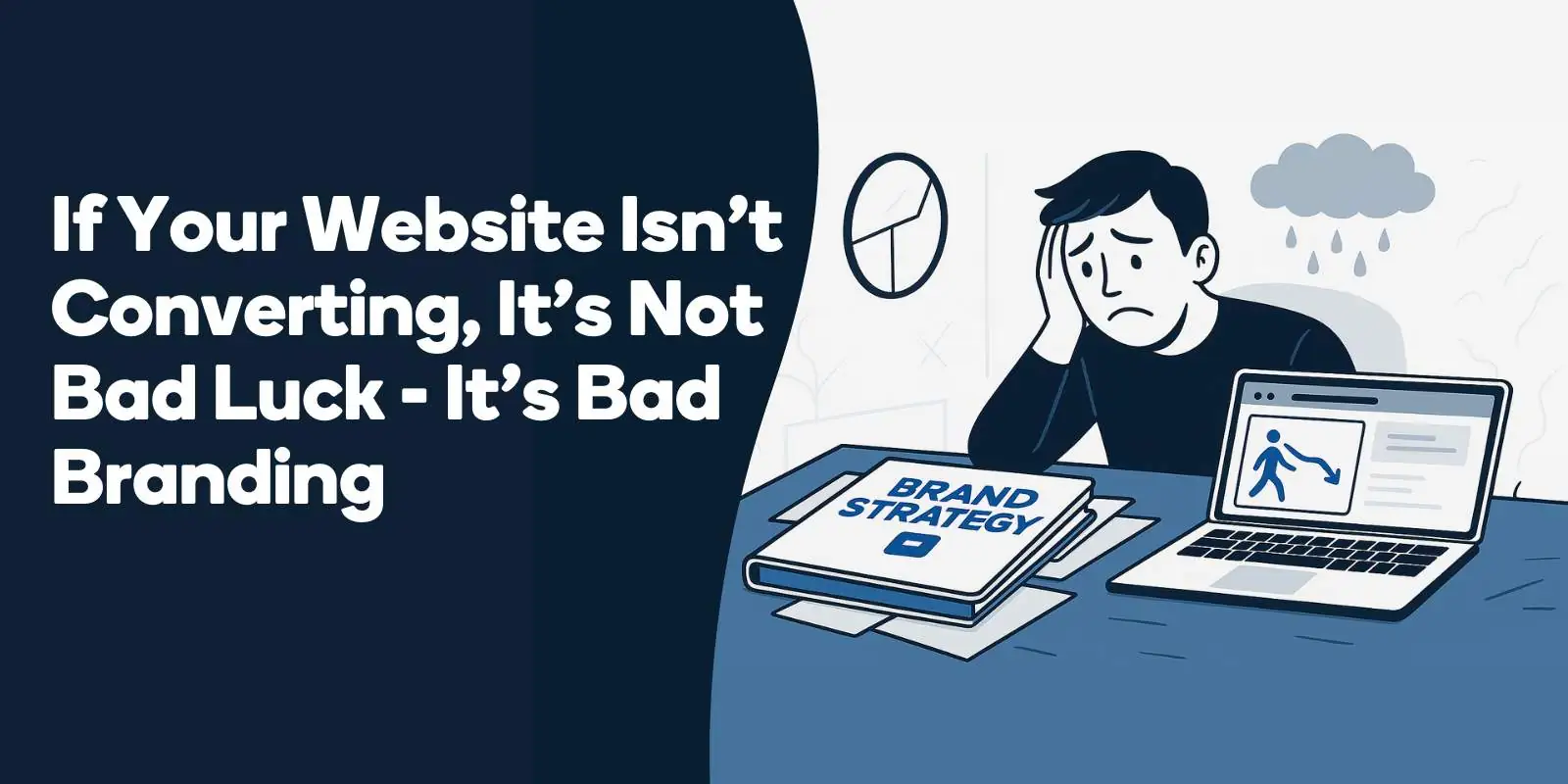This article will explore the concept of “what is a sales funnel,” their stages, examples, and strategies to help you build your own high-performing sales funnel.
Defining a Sales Funnel
At its core, a sales funnel is the customer journey prospects take when engaging with a company’s products or services.
It serves as a roadmap, guiding potential customers through different stages, from initial awareness to conversion into leads, customers, and even brand advocates.
The success of a sales funnel depends on how well it’s tailored to the needs and preferences of the target audience, and how effectively it moves them from one stage to the next.
A well-defined sales funnel empowers businesses to gain insight into their position in the sales process and evaluate its effectiveness.
The Customer Journey
The customer journey refers to the series of steps a customer takes from the initial awareness of a product or service to the eventual purchase.
This journey is closely associated with the sales funnel, as the sales funnel serves as the structure that facilitates this progression.
In other words, the customer journey is the path that customers take from the top of the funnel to the bottom, while the sales funnel provides the framework to guide them through this process.
Understanding the customer journey is essential for creating an effective sales funnel that successfully converts prospects into customers.
The Role of Sales Funnels in Business Success
Sales funnels play a pivotal role in achieving business objectives and augmenting revenue. By analyzing the performance of each stage in the funnel, businesses can identify areas of improvement, pinpoint where leads are lost, and uncover the factors that led to successful conversions.
This knowledge equips businesses with the ability to make informed decisions, optimize their marketing efforts, and ultimately, increase their bottom line. In essence, a well-designed sales funnel is the foundation for driving growth and ensuring long-term success.
Essential Components of a Sales Funnel
An effective sales funnel consists of several key components, which work together to facilitate the customer’s progression through the purchasing process.
These components typically include lead generation, lead nurturing, and conversion. Each component plays a vital role in attracting, engaging, and converting prospects into customers.
By focusing on these components and optimizing their performance, businesses can ensure that their sales funnel operates efficiently and effectively, ultimately leading to increased sales and customer satisfaction.
Lead Generation
Lead generation is the process of attracting potential customers to your business and capturing their interest in your products or services.
In today’s digital landscape, there are numerous strategies that can be employed to draw prospective customers into the sales funnel. These include creating landing pages, producing engaging blog posts, and leveraging email marketing campaigns.
Providing valuable incentives, such as lead magnets, can also be an effective way to encourage prospects to supply their contact information.
To further optimize your lead generation efforts, it’s crucial to qualify leads and ensure they are the right fit for your business.
This not only helps to streamline the sales process, but also enables your sales team to focus their efforts on nurturing leads that are most likely to convert into paying customers.
By employing a combination of effective lead generation strategies and targeted marketing efforts, businesses can significantly increase the number of qualified leads entering their sales funnel.
Lead Nurturing
Once leads have entered the sales funnel, it’s vital to maintain engagement with them throughout the customer journey.
This process, known as lead nurturing, involves establishing connections with prospective customers and fostering relationships that increase the likelihood of conversion.
One of the most effective approaches to lead nurturing is to create a tailored email sequence that guides prospects through the customer journey, providing them with relevant and valuable content at each stage.
By nurturing leads in this manner, businesses can build trust and rapport with their audience, ultimately increasing the chances of turning prospects into loyal customers.
Conversion
The conversion stage of the sales funnel is where prospective customers make the decision to purchase your product or service.
At this point, it’s crucial to provide comprehensive information on the value and pricing of your offerings, as well as addressing any lingering questions or concerns that the prospect may have.
To facilitate the conversion process, businesses can utilize tactics such as offering discounts, providing incentives, and instilling a sense of urgency.
By focusing on these strategies and optimizing the conversion stage, businesses can effectively transform leads into paying customers, boosting sales and revenue in the process.
Stages of a Sales Funnel: AIDA Model
The AIDA model is a widely-recognized framework for understanding the stages of a sales funnel, consisting of Attention, Interest, Desire, and Action.
This model serves as a blueprint for guiding prospects through the customer journey, from initial awareness to successful conversion.
By applying the principles of the AIDA model to each stage of the sales funnel, businesses can create a streamlined and effective process that maximizes their chances of converting prospects into customers.
Attention
The first stage of the AIDA model, Attention, focuses on capturing the attention of potential customers through various marketing efforts. This may involve creating engaging content, leveraging social media platforms, or utilizing targeted advertising campaigns.
The goal of the Attention stage is to encourage prospects to interact with your business, whether it be through visiting your website or getting in touch via phone or email.
By effectively capturing the attention of your target audience, you set the stage for a successful sales funnel that guides prospects through the subsequent stages of the customer journey.
Interest
The Interest stage of the AIDA model involves stimulating prospects’ curiosity and interest in your product or service.
This can be achieved by providing valuable content that addresses their needs, challenges, or aspirations.
The objective of your sales and marketing initiatives during the Interest phase is to generate interest from potential customers in making a decision.
By effectively engaging prospects and nurturing their interest, you lay the groundwork for a successful sales funnel that ultimately leads to conversion.
Desire
In the Desire stage of the AIDA model, your goal is to create a strong emotional connection between the prospect and your product or service.
This can be achieved by highlighting the unique value and benefits of your offering, as well as showcasing how it can help prospects overcome their challenges or achieve their goals.
The Desire stage is crucial in building a sense of urgency and persuading prospects to take the next step towards making a purchase.
Action
The final stage of the AIDA model, Action, is where prospects make a purchase decision and become customers.
To facilitate this process, businesses should provide comprehensive information on value and pricing, utilize sales pages and landing page deals, offer webinars and sales representative calls to address customer queries, and eliminate any hindrances that mafy impede customers from taking action.

Award-Winning
Sales Funnel & Website Expert
Discover How My Agency Can Grow Your Business
- Website: Our websites are the perfect blend of form and function.
- Sales Funnel: We build sales funnels that turn leads into customers.
- SEO: Get found online with our expert SEO services.
By effectively guiding prospects through the Action stage, businesses can successfully convert leads into customers and drive revenue growth.
Creating Your Own Sales Funnel: Step-by-Step Guide
Now that you have a solid understanding of the key components and stages of a sales funnel, you may be wondering how to create your own high-performing funnel.
The following step-by-step guide will provide you with a comprehensive blueprint for building an effective sales funnel from scratch, covering everything from identifying your target audience to generating leads, nurturing prospects, and converting leads into customers.
Identifying Target Audience
The first step in constructing a sales funnel is to gain insight into your target audience. This involves conducting research and analysis of both current and potential customers, gathering data pertaining to their demographics, interests, behaviors, and other pertinent characteristics.
By understanding your target audience, you can tailor your marketing efforts to their needs and preferences, ultimately maximizing the effectiveness of your sales funnel.
In addition, creating buyer personas can help you develop a comprehensive profile of your ideal customer, which will further inform your marketing strategies and tactics.
Generating Leads
The next step in building your sales funnel is to generate leads. As mentioned earlier, there are numerous strategies that can be employed to draw prospective customers into the sales funnel, such as creating landing pages, producing engaging blog posts, and leveraging email marketing campaigns.
In addition to these tactics, providing valuable incentives, such as lead magnets, can encourage prospects to provide their contact information in exchange for access to exclusive content or offers.
To further optimize your lead generation efforts, it’s crucial to qualify leads and ensure they are the right fit for your business.
This not only helps to streamline the sales process, but also enables your sales team to focus their efforts on nurturing leads that are most likely to convert into paying customers.
By employing a combination of effective lead generation strategies and targeted marketing efforts, businesses can significantly increase the number of qualified leads entering their sales funnel.
Nurturing Prospects
Once leads have entered your sales funnel, it’s essential to maintain engagement with them throughout the customer journey.
This can be achieved by providing relevant and valuable content that addresses their needs and interests, such as blog posts, videos, webinars, or other resources.
Additionally, staying in contact with your prospects on a regular basis can help ensure that they remain interested in your product or service.
By nurturing leads in this manner, you can build trust and rapport with your audience, ultimately increasing the chances of turning prospects into loyal customers.
Converting Leads into Customers
The final step in the sales funnel process involves converting leads into paying customers.
This can be achieved by providing comprehensive information on the value and pricing of your offerings, addressing any lingering questions or concerns that the prospect may have, and offering discounts or incentives to encourage a purchase decision.
By focusing on these strategies and optimizing the conversion stage, businesses can effectively transform leads into paying customers, boosting sales and revenue in the process.
Additionally, fostering a new relationship with customers and cultivating long-term loyalty can further enhance customer retention and profitability.
Optimizing Your Sales Funnel for Maximum Results
An effective sales funnel requires ongoing optimization and fine-tuning to ensure it continues to perform at its best. This involves monitoring key metrics, conducting A/B testing, and adapting to customer feedback.
By continually assessing and refining your sales funnel, you can identify areas for improvement and make the necessary adjustments to enhance its efficiency and boost conversions.
In the following sections, we’ll explore various strategies for optimizing your sales funnel, including tracking and analyzing data, A/B testing, and adapting to customer feedback.
Tracking and Analyzing Data
Tracking and analyzing data is a crucial aspect of optimizing your sales funnel. By selecting pertinent metrics and events to track, you can gain valuable insights into the performance of your marketing efforts and identify areas for improvement.
Some common metrics to track include website visits, customer acquisition, customer retention, and customer lifetime value.
Data analysis techniques, such as statistical analysis, predictive analytics, and machine learning, can help you uncover trends and patterns that can inform your decision-making and optimize your business performance.
By monitoring and analyzing your data, you can ensure that your sales funnel remains effective and efficient, ultimately leading to increased sales and customer satisfaction.
A/B Testing
A/B testing is an invaluable tool for optimizing different stages of the sales funnel. It involves creating two versions of a webpage or app and comparing their performance by tracking key metrics, such as click-through rate, conversion rate, and time on page.
By conducting A/B tests, you can identify which elements of your sales funnel are most effective and which need to be improved.
For example, you might test different headlines, calls to action, or images to determine which version generates the highest conversion rate.
By leveraging A/B testing, you can continually refine your sales funnel to maximize its performance and drive better results.
Adapting to Customer Feedback
Listening to customer feedback is essential for recognizing potential areas for improvement and making the necessary modifications to your sales funnel.
By collecting feedback through surveys, customer support interactions, or monitoring comments on your marketing materials, you can gain valuable insights into the needs and preferences of your audience.
Analyzing this feedback can help you identify trends and patterns, which can inform your decision-making and lead to more effective marketing strategies.
By actively adapting to customer feedback, you can ensure that your sales funnel remains relevant and effective, ultimately leading to increased customer satisfaction and loyalty.
Real-Life Sales Funnel Examples
To further illustrate the power of effective sales funnels, let’s take a look at some real-life examples from various industries. Netflix’s free trial is a prime example of a successful sales funnel.
By offering a free trial, Netflix allows potential customers to experience their streaming service before committing to a subscription, fostering trust and loyalty among users.
Groupon’s discount offers serve as another example of a successful sales funnel. By providing limited-time discounts on products and services, Groupon generates a sense of urgency that encourages customers to take advantage of the offer before it expires.
Amazon’s flywheel strategy is yet another example of a successful sales funnel. This strategy combines discounts, free shipping, and other incentives to motivate customers to make purchases and return for future transactions.
By leveraging these and other sales funnel examples, businesses can gain valuable insights into the strategies and tactics that drive customer acquisition, conversion, and retention.
Armed with this knowledge, you can create your own high-performing sales funnel that effectively guides prospects through the customer journey and ultimately drives business growth.
Frequently Asked Questions
What is the sales funnel?
A sales funnel, also known as a purchase funnel, is a model that describes the journey a customer goes through from the first interaction with your brand (awareness) to the ultimate goal of a purchase (conversion).
It’s called a ‘funnel’ because, like a physical funnel, the number of potential customers decreases as they move through the stages of the process – from awareness to interest, then decision, and finally, action.
What is a sales funnel example?
A basic example of a sales funnel could be:
- Awareness: A consumer comes across your brand through a Google search, social media ad, or blog post.
- Interest: The consumer starts researching your products or services, perhaps by signing up for your newsletter or following your social media channels.
- Decision: The consumer is ready to buy and begins to evaluate their options, maybe by comparing your prices with those of competitors.
- Action: The consumer makes a purchase, effectively moving from a lead to a customer.
What is a sales funnel for dummies?
A sales funnel is essentially the path that your potential customers follow from first learning about your product or service until they make a purchase. You can visualize it as a funnel, with a wide top representing all potential customers and a narrow bottom representing those who make a purchase.
What are the 4 stages of the sales funnel?
The four stages of the sales funnel are:
- Awareness: The potential customer learns about your business and what you offer.
- Interest: The potential customer starts to research your company and its products or services.
- Decision: The potential customer is considering purchasing from you and is comparing your offering to your competitors.
- Action: The potential customer decides to make a purchase.
Do sales funnels really work?
Yes, sales funnels can be extremely effective when implemented correctly. They provide a framework for understanding your customers’ journey and help guide your marketing and sales efforts. They also allow for tracking and analyzing customer behavior at each stage, which can lead to valuable insights and improvements in your strategy.
Why do sales funnels fail?
Sales funnels can fail for several reasons. These may include a lack of understanding of the target audience, not effectively communicating the value of the product or service, weak call-to-actions, poor follow-up strategies, and not nurturing leads throughout the funnel stages.
Can you make money with funnels?
Yes, you can make money with sales funnels. They are a strategic tool that can guide potential customers towards making a purchase. By optimizing each stage of the funnel and making it easy and appealing for the customer to move to the next stage, businesses can increase their conversions and thus their revenue.
How do you create a sales funnel for beginners?
Creating a sales funnel involves several steps:
- Understanding your audience: Know who your potential customers are, what they need, and where you can find them.
- Generating awareness: Use various marketing strategies to make your target audience aware of your products or services.
- Nurturing leads: Develop a relationship with potential customers by providing them with valuable content and engaging with them.
- Converting leads into customers: Provide a compelling call to action that encourages leads to make a purchase.
- Maintaining customer relationships: Continue to engage with your customers after purchase to encourage repeat business and referrals.
How much should I pay for a sales funnel?
The cost of a sales funnel can vary greatly depending on the complexity of the funnel, the tools you use to build and manage it, and whether you do it yourself or hire a professional. It could range from a few hundred dollars for a basic DIY sales funnel, up to several thousands of dollars for a more complex, professionally-built funnel.
Is a sales funnel better than a website?
A sales funnel and a website serve different purposes and both are important for a business. A website is a digital representation of your business and offers a broad range of information about your company, products, or services.
A sales funnel, on the other hand, is a strategic process designed to guide visitors towards making a purchase. Therefore, a well-optimized website can be part of an effective sales funnel.
Conclusion
In conclusion, an effective sales funnel is crucial for guiding prospects through the customer journey and converting them into loyal customers.
By understanding the key components and stages of a sales funnel, and implementing strategies to optimize each stage, businesses can drive revenue growth and achieve long-term success.
The AIDA model serves as a valuable framework for building a successful sales funnel, while ongoing optimization through data analysis, A/B testing, and adapting to customer feedback ensures continued performance.
By applying these principles and learning from real-life sales funnel examples, you can create a high-performing sales funnel that delivers maximum results for your business.
So, go forth and conquer the world of sales funnels with confidence and expertise!
